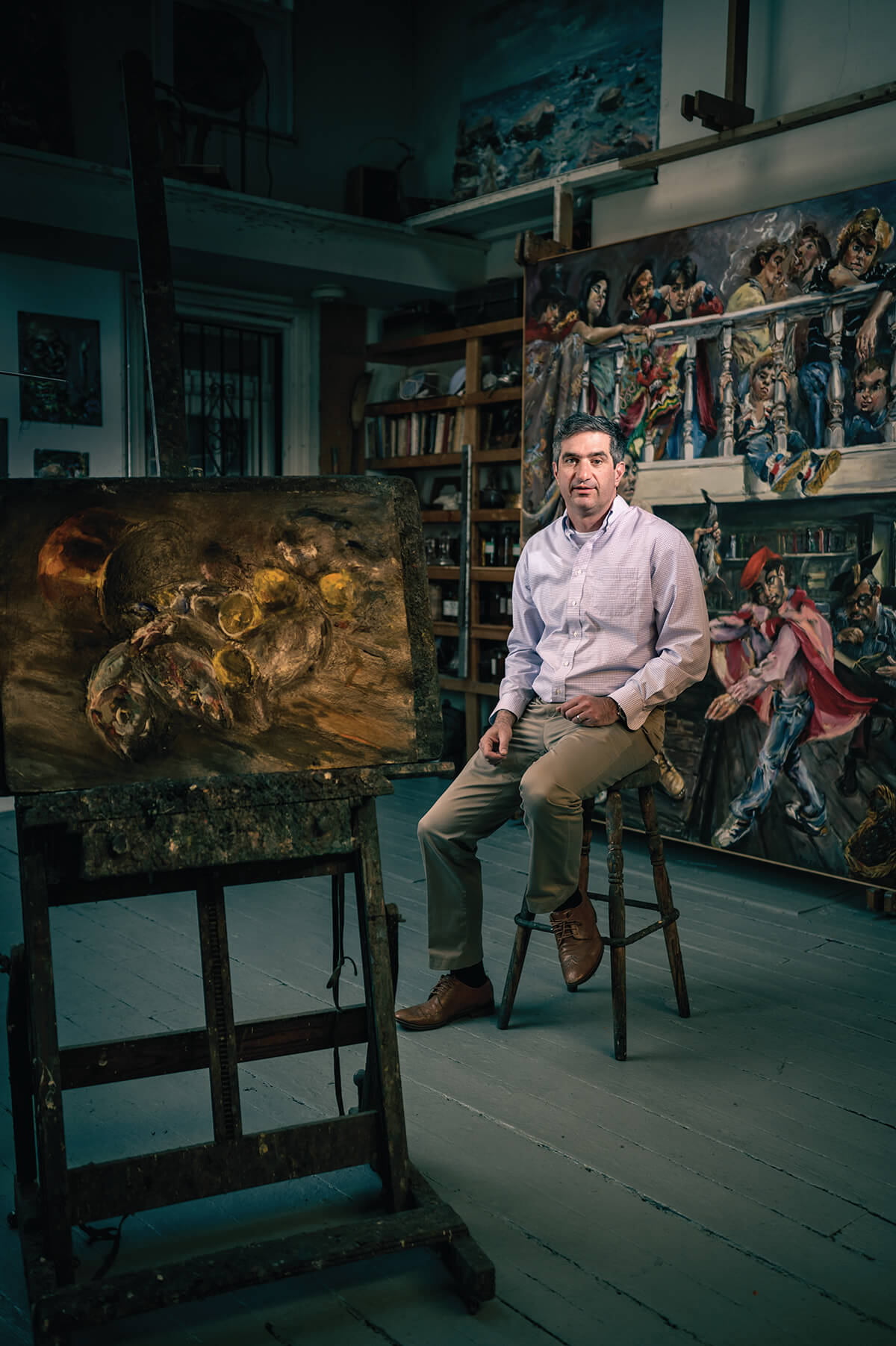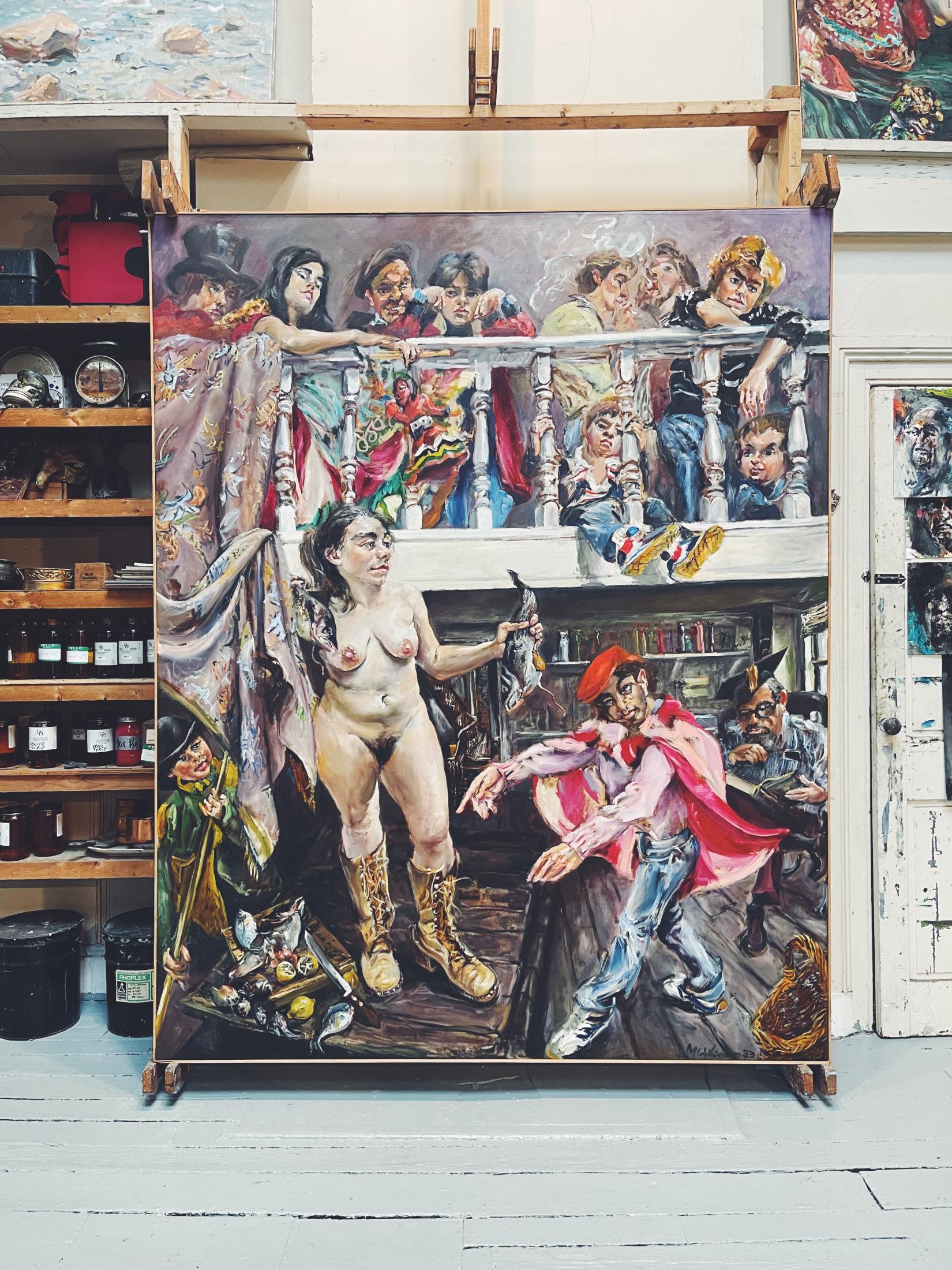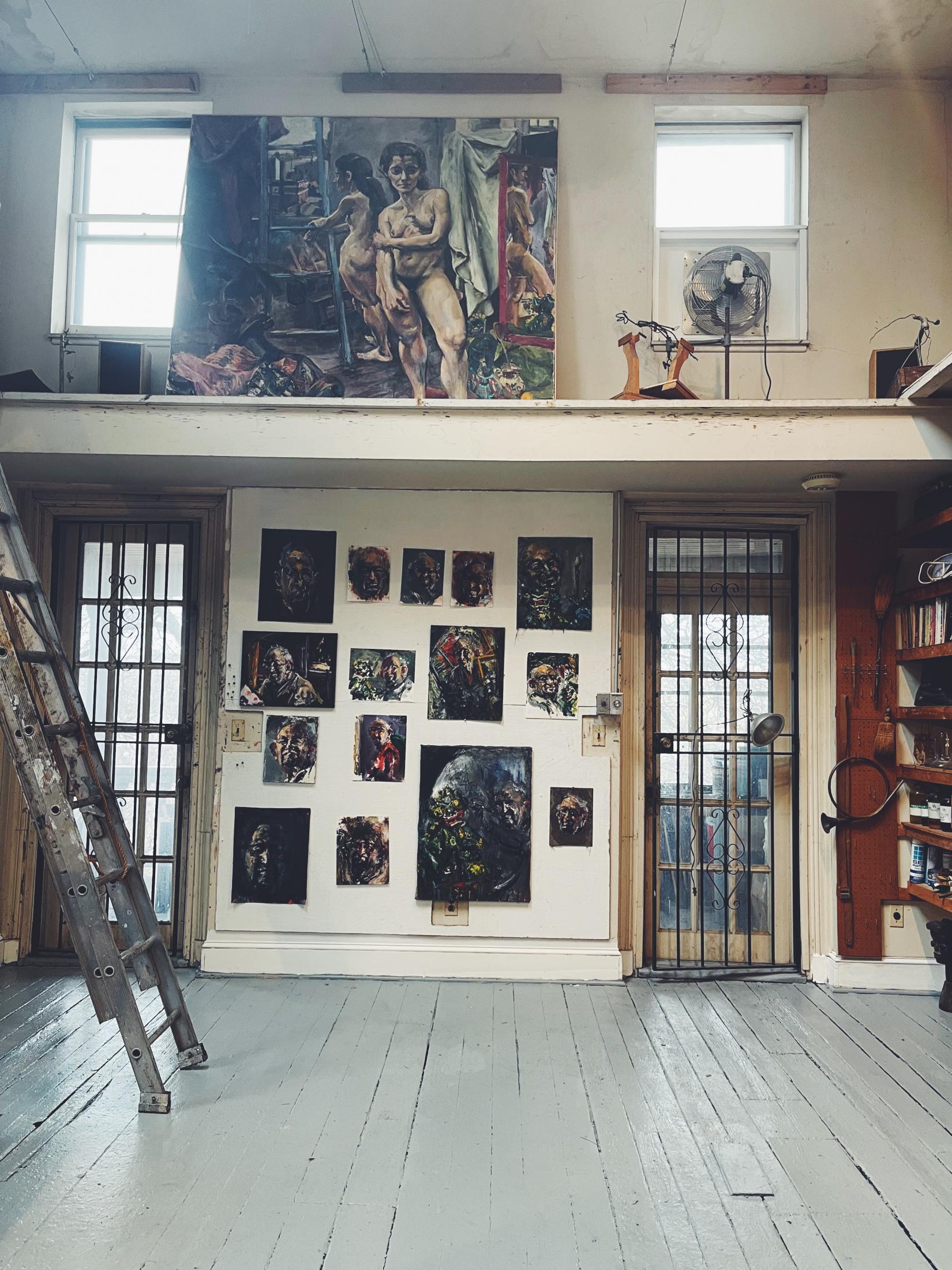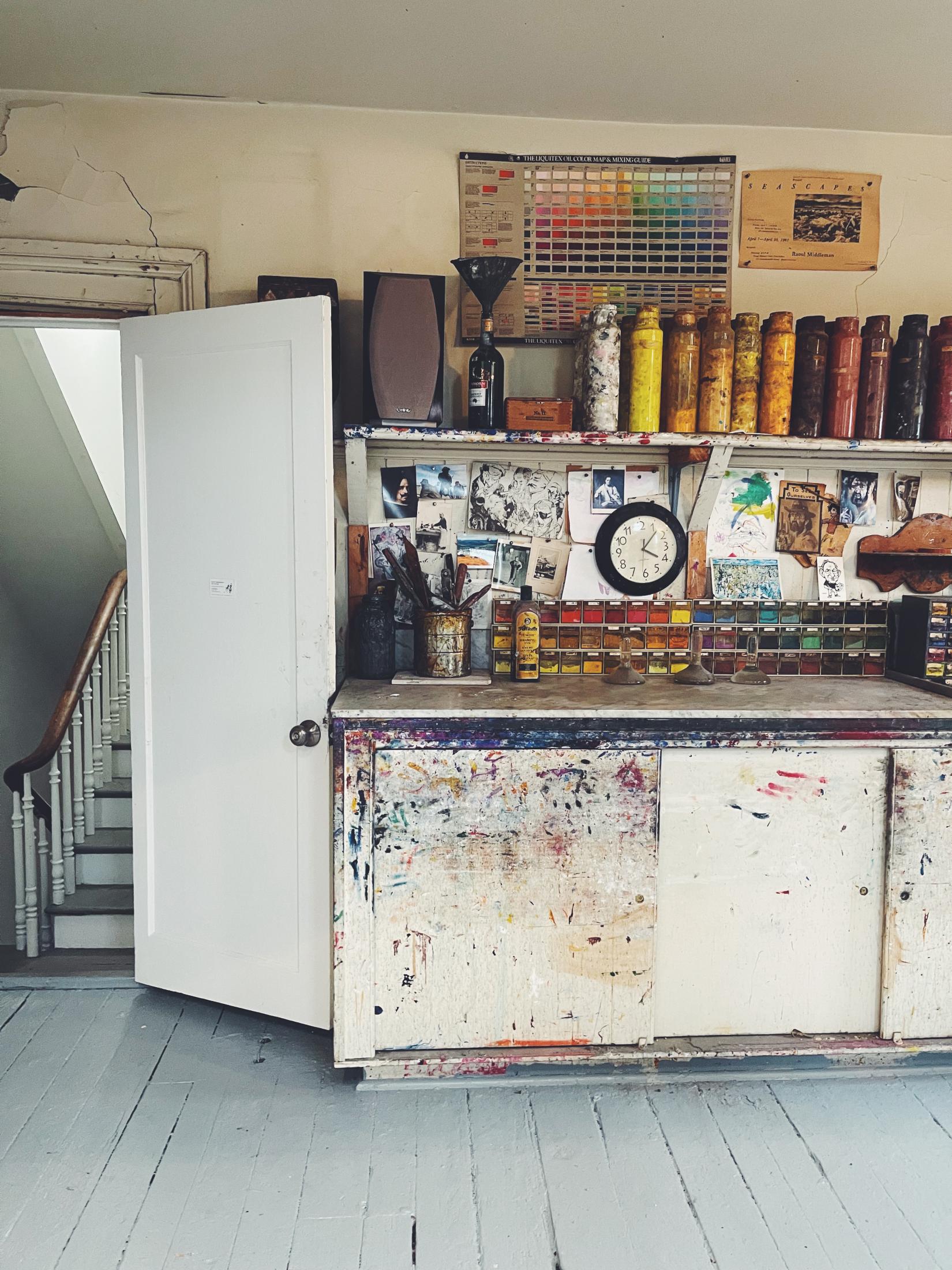Arts & Culture
Mt. Vernon Studio of Late, Legendary Painter Raoul Middleman to Become a Museum
A visit to the former home of one of the city’s most preeminent artists, now complete with a shrine-like studio and rotating gallery.

The first thing you see is the paint. Splashed across canvases that hang on the walls. Slathered onto paper thumbtacked to a door. Smudged by fingerprints along cabinets and light switches. Dozens of squished silver tubes of the stuff, piled high like some modern sculpture. Its pixie-dust-like pigments waiting on a shelf to be mixed.
The colorful chaos is a contrast to Ben Middleman, who, in a crisp button-up and khakis, walks around his late father’s studio, sharing the stories behind each of its myriad artworks.
One particularly massive oil-on-linen, titled The Fishmonger, sits on an ad-hoc easel at eight feet high, featuring a bacchanalian cast of characters, some standing nude, smoking cigarettes, donning top-hats, and dancing in hot-pink capes, all against the backdrop of the very room in which we stand.
“You can see, that’s the balcony up there, the model stand—that’s me, and my older brother, I think that’s my mom,” he says. “It’s the house, the studio—and everything all kind of revolving around it.”


This house, this studio, located at 943 N. Calvert Street, on the corner of E. Eager in Mt. Vernon, with its red-painted brick, bright blue doorway, and those iconically Baltimore marble steps, was at the core of Raoul Middleman’s life.
Purchased in 1975 during the city’s dollar housing program, it was where the renowned artist and longtime Maryland Institute College of Art professor worked—and for a long time, lived, with his wife, Ruth, and their three sons—until his death at the age of 86 this past October.
Soon enough, it will also become a new art museum, with this shrine-like second-floor studio and first-floor rotating gallery created in honor of one of the city’s most preeminent artists.
“His life was so much about art,” says Ben, 46, who, with experience in galleries and art publishing, will serve as the museum’s main curator. “He never cared about commercial success, he just wanted to show people the work and get their response. This is a way of doing that.”
Born in Baltimore in 1935, Raoul Middleman was a man of many lifetimes: an Ashburton kid, a Poly grad, a Johns Hopkins philosophy major, an Army clerk, a one-time cowboy, a Kerouacian hitchhiker. In New Orleans, he tried his hand at writing a novel, but a bout of writer’s block led him to the visual arts.
He would attend prestigious institutions like the Pennsylvania Academy of Fine Arts and Maine’s Skowhegan School of Painting & Sculpture before returning to Baltimore in 1961. Here, he found like-minded artists at the legendary Martick’s bar and landed a job at MICA, where he would work for the next six decades.
All the while, he painted, prolifically, with his oeuvre regaled for its energy, intensity, and fantastical exploration of the human condition, joining the collections of the Metropolitan Museum of Art, the National Gallery of Art, and the National Academy Museum. It was sold at galleries like C. Grimaldis on Charles Street, and also stashed away by the thousands in a Belair-Edison warehouse.
Today, that larger-than-life spirit—this magazine once described Middleman as “like an erudite longshoreman, mentioning Plato and classic French poetry one minute and referring to ‘Bawlmer’ the next”—still lingers throughout The Raoul Middleman Studio Museum, where one can imagine a young Ben and his brothers running up and down the creaky staircase, pausing to stretch canvases for pocket change, or sit as models for their father.
“It’s like coming into his world,” he says. “For him, art was this real, tactile process. He lived in this space, covered in paint, exploring with it, creating these works. This wasn’t a job he clocked out of. It was so central to who he was.”


Like the other studio-museum concepts that inspired this space, such as the Frida Kahlo Museum in Mexico or the Musée Gustave Moreau in France, Middleman’s palettes are stacked largely as he left them, old mementos remain tacked around a long-stopped clock, and a wooden stool sits at the ready beside the mirror that made its way into many artworks.
Some of his favorites will be on display in the inaugural Life in the Studio exhibition, which opens on April 3—Raoul’s birthday—including several lesser-known portraits, cityscapes, and still lives.
The museum will be free to the public and open Saturdays from 1-4 p.m., as well as by appointment, with Ben and his mother, who keeps her Ink Spot Press printmaking workshop in the basement, taking turns as docents.
“I think he’d be touched,” says Ben. “He always very enthusiastic that every show was maybe the best he’d ever had. Now putting this on, it’s nice to picture him saying that.”